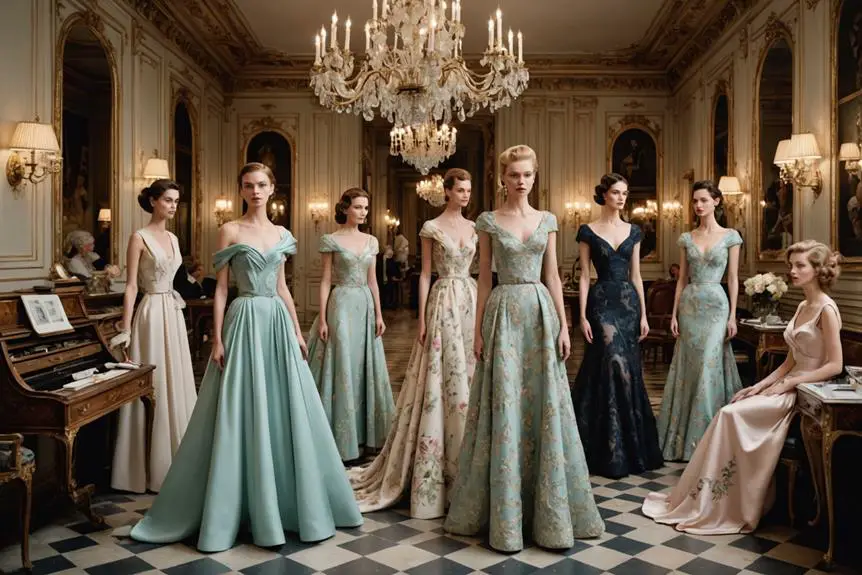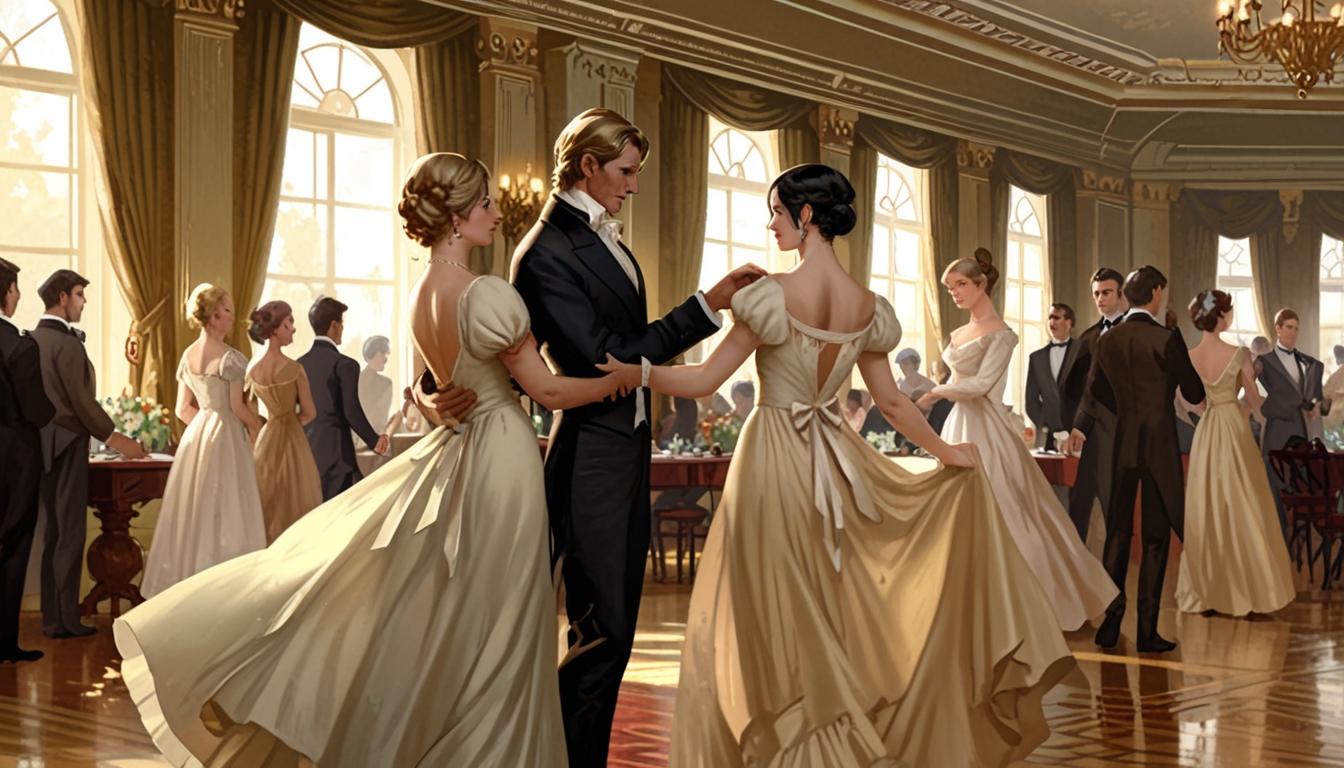Pierre Balmain's history reflects a transformative journey through fashion, beginning with his upbringing in a family steeped in textiles. After founding Maison Balmain in 1945, the world was introduced to his "New French Style," which celebrated femininity with elegant silhouettes that captivated Hollywood stars like Marlene Dietrich. His creations earned accolades, enhancing the brand's global prestige and establishing Balmain as a leader in haute couture. The legacy continues today, evolving under Olivier Rousteing's modern vision while maintaining Balmain's opulent roots. From iconic designs to a contemporary revival, there's much more to explore about Balmain's impact on fashion and its enduring influence on today's trends.
Early Life and Background
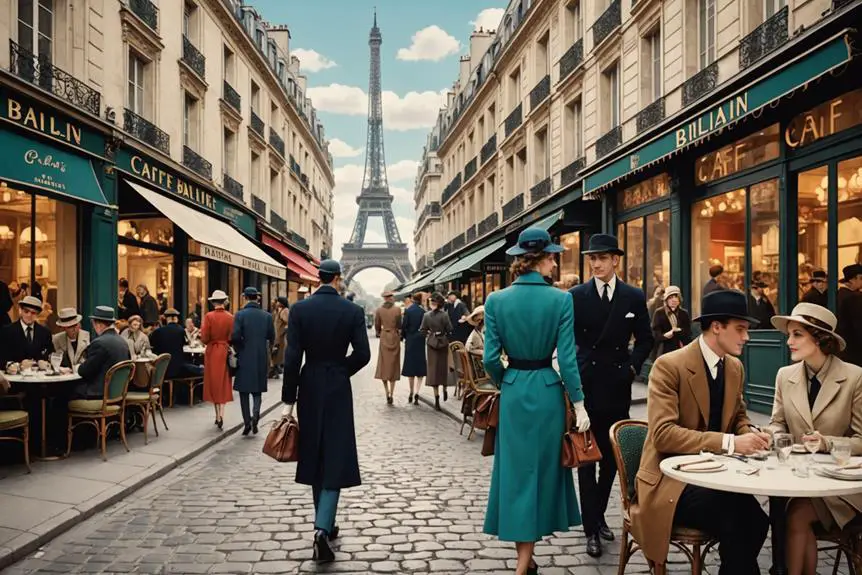
Born in May 1914 in St Jean de Maurienne, France, Pierre Balmain's early life was deeply intertwined with the world of fashion, thanks to his family's involvement in the industry. His mother ran a dress shop, while his father owned a drapery business, laying a foundation for his future endeavors. However, the death of his father in 1921 led to financial struggles, prompting Balmain to secure a scholarship to a boarding school in Chambéry at age 11.
Initially drawn to architecture, he enrolled at École des Beaux-Arts in 1933, but his passion shifted towards fashion. He began his career as a designer, working for Edward Molyneux from 1934 to 1939. This experience, coupled with his exposure to couture through his mother's boutique, greatly shaped his aesthetic. The society women he encountered provided him with a rich understanding of elegance and style, which would later influence his designs. During World War II, he further honed his skills while collaborating with Lucien Lelong and meeting fellow designer Christian Dior, solidifying his path in the fashion world. Balmain's early years laid the groundwork for his future success in haute couture.
The Rise of Maison Balmain
The Rise of Maison Balmain
In the wake of World War II, Pierre Balmain established Maison Balmain in 1945, positioning it at the forefront of France's cultural renaissance. His first collection, embodying the "New French Style," was a celebration of femininity and opulence that resonated with the post-war zeitgeist. The designs featured long bell-shaped skirts and nipped-in waists, closely aligned with Christian Dior's revolutionary "New Look." This strategic alignment helped to define the brand's signature aesthetic, making it a beacon of hope and luxury. The influence of various designers in the fashion industry during this period, similar to Givenchy's evolution, further emphasized the importance of innovative design and branding in luxury fashion. Maison Balmain quickly rose to prominence due to several key factors:
- Innovative Design: The brand's emphasis on femininity and elegant silhouettes captivated fashion enthusiasts.
- High-Profile Endorsements: Notable figures like Alice B. Toklas and Gertrude Stein championed the brand, enhancing its allure.
- Celebrity Clients: Dressing icons such as Marlene Dietrich and the Duchess of Windsor solidified its status.
- Global Expansion: Winning the Neiman Marcus Fashion Award in 1955 marked a significant milestone, establishing Maison Balmain as a key player in the international fashion scene.
Through these achievements, Pierre Balmain's vision transformed into a global fashion powerhouse.
Iconic Designs and Clients
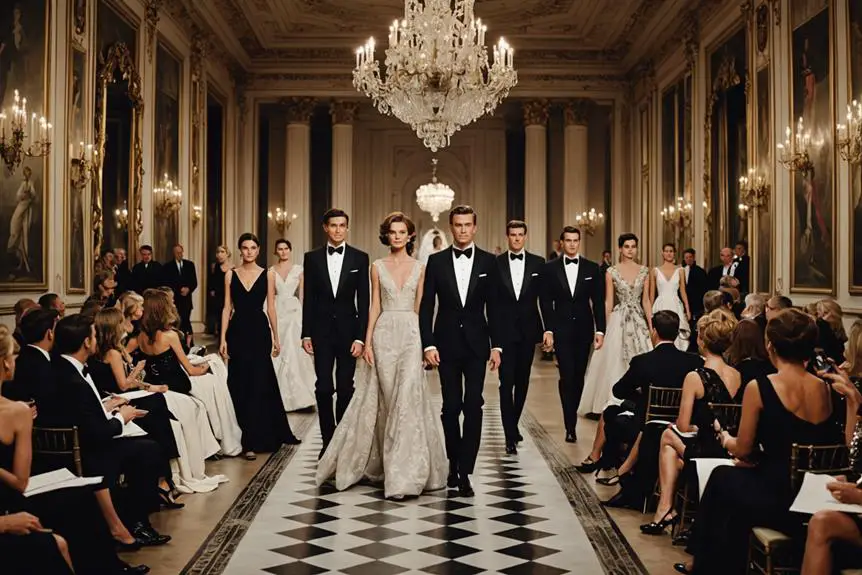
As Maison Balmain rapidly ascended in the fashion world, its iconic designs and high-profile clients played a pivotal role in solidifying its reputation. Pierre Balmain's first collection in 1945 introduced long bell-shaped skirts, echoing the post-war trend set by Dior's New Look, which garnered rave reviews from critics like Gertrude Stein. This innovative approach caught the attention of Hollywood stars, including Marlene Dietrich and Katharine Hepburn, who became loyal clients, further establishing Balmain's prominence. His designs epitomized elegance and sophistication, particularly through his work with Brigitte Bardot, whose velvet dress became a fashion sensation. In the domain of luxury fashion, the evolution of brand identities, as seen in Chloé's vintage tags, reflects the enduring allure of timeless designs. Balmain's signature style emphasized femininity, featuring nipped-in waists and richly embroidered fabrics that set a new standard in couture fashion. Remarkably, in 1947, he dressed Queen Sirikit of Thailand for her international royal tour, enhancing the brand's visibility and prestige.
Through these iconic figures and high-profile clients, Balmain not only showcased his extraordinary designs but also reshaped the perception of post-war fashion, reinforcing the brand's legacy of luxury and refinement. This blend of creativity and celebrity clientele firmly positioned Maison Balmain as a cornerstone of couture fashion history.
Legacy and Influence
Pierre Balmain's legacy profoundly shaped the fashion landscape, particularly in the domain of haute couture. His fashion house, established in 1945, revitalized Paris couture post-World War II, introducing a signature style that embraced femininity and opulence. This impact is evident in various ways:
- Cultural Endorsement: His designs received accolades from notable figures like Gertrude Stein, elevating the brand's status.
- Elite Clientele: Balmain dressed icons such as Marlene Dietrich and Queen Sirikit of Thailand, cementing the brand's association with elegance.
- Diverse Influence: Beyond fashion, Balmain considerably contributed to costume design, even earning a Tony Award nomination in 1980.
- Enduring Relevance: After his passing in 1982, the brand maintained its legacy as designers continued to honor his vision while adapting to contemporary fashion.
This multifaceted influence not only solidified Pierre Balmain's reputation in haute couture but also guaranteed that his spirit of sophistication and opulence remains integral to the industry today. His ability to blend artistic expression with wearable art has left an indelible mark that continues to inspire future generations of designers.
Modern Era and Evolution
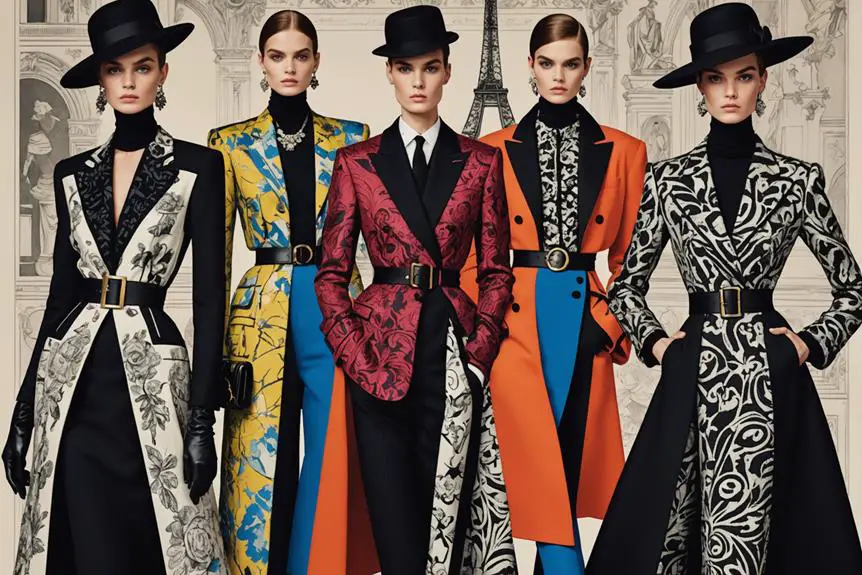
Since Olivier Rousteing took the helm as Creative Director in 2011 at just 25 years old, Balmain has undergone a remarkable transformation that balances respect for its heritage with a bold, modern vision. Rousteing's focus on modernizing the brand has not only rejuvenated its image but also maintained the craftsmanship that Pierre Balmain championed. Under his leadership, the fashion house expanded its product lines, introducing menswear, womenswear, childrenswear, and accessories, thereby appealing to a broader audience.
In 2016, the acquisition by Mayhoola for Investments LLC catalyzed rapid growth, allowing Balmain to diversify its offerings and solidify its presence in the global fashion landscape. Innovative marketing strategies have kept the brand relevant, leveraging high-profile collaborations with celebrities and an active social media presence to engage younger consumers.
This evolution reflects a commitment to blending traditional craftsmanship with contemporary trends, ensuring that Balmain remains a key player in the modern fashion arena. By honoring its heritage while embracing change, Rousteing has positioned Balmain not just as a brand, but as a cultural phenomenon.
Frequently Asked Questions
What Is Balmain Brief History?
Balmain began in 1945, quickly gaining acclaim for its luxurious designs. You'll notice its signature feminine silhouettes and opulent styles, which drew high-profile clientele. The brand evolved, maintaining relevance through innovative creative directors.
What Happened to Pierre Balmain?
Pierre Balmain passed away from liver cancer in 1982, shortly after finishing his fall collection sketches. His death marked a decline in his brand's prominence, though its legacy continued through subsequent creative directors and designers.
What Is the Difference Between Balmain and Pierre Balmain?
Balmain represents the modern evolution of the brand, focusing on contemporary styles and marketing, while Pierre Balmain embodies the original vision of feminine elegance and craftsmanship, establishing timeless designs that defined mid-20th century fashion.
Why Is Balmain so Famous?
Balmain's fame stems from its opulent designs, innovative marketing, and celebrity endorsements. You'll notice how its distinct style contrasts with utilitarian fashion, enchanting audiences and establishing a lasting influence in haute couture and modern fashion.
